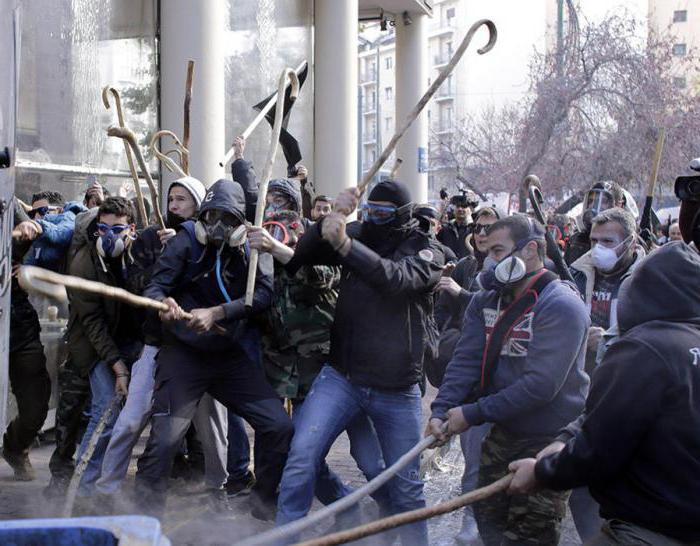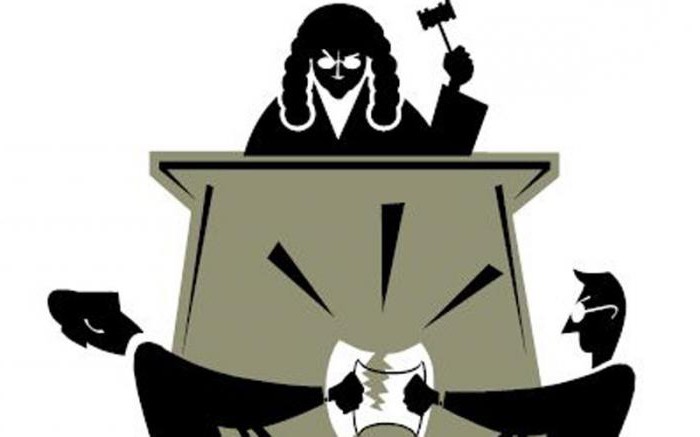Consider the concept of labor disputes, their features, methods of resolving conflicts arising between the employer and employees.
Each employee has a legal right to protect his interests, freedom, using methods and procedures that are stipulated by Russian law. The concept and procedure for the resolution of labor disputes are specified in Chapter 60 of the Labor Code. Any employee has the right to individual and collective resolution of the conflict with the employer, including the holding of a strike.
There is also such a term as “conciliation procedures”, which are regulated by the Labor Code of the Russian Federation (Articles 407-415). For example, it involves the conclusion of a settlement agreement between the conflicting parties.

Reasons for the emergence of disputes
Consider the concept of labor disputes, as well as their varieties. This term means any disagreement that arises between the direct employer or his representative and the employee on matters relating to the regulation of labor relations, which are decided by a special jurisdictional body.
Disagreement is a different assessment of the situation by the interacting parties. What is this concept? The types and causes of labor disputes may vary, but in any case, they are associated with violations of the rights of employees by the employer or with violations by employees.

Classification of labor disputes
This concept and classification of labor disputes suggest the division of conflicts into several types.
The first division is carried out by entities that enter into a dispute.
Individual conflicts involve the violation of the interests of individual employees. In the collective version of the dispute, the interests of the entire team are affected. For example, the employer does not fully fulfill its obligations specified in the collective labor contract.
Disputes arising from the subject of labor law
Considering the concept of an individual labor dispute, we note that a conflict may arise due to violations of the rights of an individual employee caused by non-payment of wages, illegal dismissal, delayed issuance of necessary documents, unreasonable recovery orders.
Considering the concept and causes of labor disputes, it is necessary to highlight those situations that are associated with violation of labor standards, exceeding the permissible speed of work. For example, an employee is forced to assert his rights if the employer does not provide him with normal working conditions, does not guarantee safety at the workplace.
In addition, in a court of law an employee can challenge the refusal to accept him for work, if in reality there were no good reasons for this.

Violations of the procedure for consideration of local acts
The concept of labor disputes also includes those conflict situations that arise in connection with violations of relations regarding the participation of employees in the management of an enterprise (organization). For example, the employer tries to adopt various local acts, without coordinating them with the labor collective, as well as with the primary trade union organization.
The concept of labor disputes also includes violations arising from the attitude of the employer to professional retraining and advanced training of his subordinates. For example, it is possible to challenge the requirements of the employer to pay for employee training, if it is mandatory according to local documents in force in this organization.
In addition, the employee has every right to appeal the act of the commission, which was engaged in the investigation of an accident at work, if he does not agree with the conclusions and contents of the document. What does the concept of litigation include? For example, if the employer does not want to pay his employee a two-day sick leave, the employee writes a statement to the labor dispute committee.
Variants of labor disputes on the nature of the conflict
When analyzing the concept and types of labor disputes, it is necessary to dwell on their unit on the merits of the conflict. There are disputes that are related to the violation of one of the parties to the employment contract, as well as conflicts regarding redress and compensation payments.

Varieties of conflicts for resolution
What is a similar labor dispute (concept)? The order of consideration of the emerging conflict is indicated in the local acts of the organization. According to the option of resolving a controversial issue, claim and non-claim options are distinguished.
Disputes of a claim type are considered to be all disagreements that arise due to the use of regulatory acts, labor agreements, and contracts. In the process of resolving them, the employee restores a certain right by filing a lawsuit with the courts. Disputes of this type are individual, suggest a certain course of action. The employee first has the right to apply to the labor dispute committee, which exists in each organization.
Unskilled disputes are those disagreements that arise due to changes in existing or the introduction of new working conditions. To resolve them, there is a certain procedural form.

Conflict resolution bodies
When choosing a jurisdictional body that will resolve conflicts arising between participants in relations, it is important to consider the nature of the dispute, as well as its causes. For example, to solve a problem, you can attract a higher organization. For teachers, for example, the Ministry of Education of the region or the Russian Federation will become such a body. In the event that the parent organization has the right to change the decision taken by the parent company, or the right to give directions to eliminate violations, the problem is solved within the time limits established in the Russian Federation for labor disputes. If the conflict is individual, the employee can start by submitting an application to the labor dispute commission operating in each organization.
In the event that disagreements arise related to relations in the field of labor, the employer and employee act as parties to the dispute. The Constitution of the Russian Federation contains the 46th article, which gives all citizens the right to judicial protection. In addition, the court may establish the illegality of the declared or ongoing strike. When resolving collective disputes, the procedure for conciliation procedures is used; a special conciliation commission, ordinary arbitration, mediator acts as the jurisdictional body.
Control and oversight bodies, which have the right to give instructions that oblige violators to be executed, can also act as mediators to eliminate the causes that caused the conflict.

Features of the preparation of claims for labor conflicts
In the Labor Code of the Russian Federation (Article 382), not only labor dispute commissions, but also a court are established as those bodies that can deal with individual conflicts. For example, if an employee was unlawfully dismissed, he can immediately contact the court in person or through his legal representative. Note that the plaintiff is obliged to prove to the court the illegality of his dismissal, to provide undeniable facts of violation by the employer of labor laws. In addition to the judiciary, a complaint about unlawful dismissal may be submitted by the employee to the labor inspectorate.
The essence of conflict development
The emergence and development of a labor conflict involves certain stages. First, the reason for the dispute appears, for example, the employer dishonestly performs his immediate duties under the employment contract.
Next, an assessment of the conflict that has arisen is carried out by different parties to the existing employment contract, that is, disagreements arise.
An attempt to resolve the differences on their own through consultations or negotiations does not bring results. In this case, under Russian law, a statement of the essence of the conflict is submitted to the competent jurisdictional body.
It is at this stage that a labor conflict develops, which involves resolving the issue, making a specific decision. Each party to the dispute has the right to appeal a decision made by a judicial authority or labor inspectorate.

Unresolved Opposition
Article 381 of the Labor Code of the Russian Federation refers to a similar version of the conflict. Disagreements are characterized as the impossibility of reaching agreement on views, opinions, interests, the appearance of contradictions, inconsistencies in thoughts, words, actions. This situation can be eliminated through mutual negotiations. If one of the parties does not agree to the concessions, the resolution of the labor dispute is carried out in the manner that is established to resolve such conflicts.
In connection with the transition of our country to a market version of economic relations, the state is no longer the only employer for citizens. That is why the question arose regarding the implementation by managers of the current labor legislation in the country. In market conditions, the interests of the employee and his immediate superior do not always coincide.
That is why the source of the dispute is often the illegal dismissal, untimely payment of wages to employees, as well as other types of conflicts that need legislative regulation.
Conclusion
These situations may arise due to conflicts of interest, not only because of ignorance of the Labor Code, but also if you want to circumvent the main local acts, including the main articles of the Labor Code. In resolving such conflicts, democracy of order is used, which is associated with the participation in the resolution of the conflict of the broad masses of workers.
In addition, there is such a concept in Russian legislation as the simplicity of the procedure for resolving a labor dispute. It consists in the lack of payment by the plaintiff of the state fee for any conflicts relating to labor relations, as well as in the availability of appeal to the courts. After consideration of the statement of claim submitted by the employee, the state fee will be collected from the organization or from the manager himself, who committed violations of generally accepted labor law standards in relation to his employee.